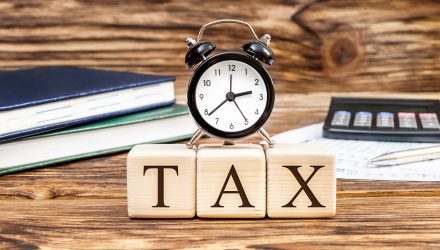Bartolini explained that if the capital losses exceed a portfolio’s capital gains, the net loss can be used to offset up to $3,000 of the current year’s ordinary taxable income. If the annual net loss is more than $3,000, the excess can be carried forward to offset gains and ordinary income in future tax years.
Blaine Docker, Chief Operating Officer at Main Management, pointed out that there are 2 types of gains and losses: short-term and long-term. Short-term capital gains and losses include the sale of investments owned for 1 year or less. Long-term gains and losses are realized after selling investments held longer than 1 year. The difference between the two is the rate of taxation.
Short-term gains are taxed at the marginal tax rate on ordinary income of up to 37%. For those subject to the net investment income tax, the effective rate can be has high as 40.8%. Long-term capital gains rates, on the other hand, are significantly lower at the top bracket at 23.8% including NIIT for high earners. This is important to know because short and long-term losses must be used first to offset gains of the same type, and focusing on short-term losses can be beneficial for high-income investors.
Joshua Jenkins, Portfolio Manager for CLS Investments, also noted that based on a sampling of their portfolios, about 80% of fixed income exposure has an unrealized loss spread across virtually all sectors, with tax lots at a loss which were acquired each year going back to 2013. However, Jenkins added that the interest payments were often enough to overcome the price declines from rising rates, so these types of investments are not completely without merit in a total return standpoint.
As investors reassess their fixed-income portfolios to potentially engage in a tax-loss harvesting strategy, Bartolini argued one may look at ETFs to lower costs or rotate into a potentially more beneficial sector.
For example, the SPDR Portfolio Intermediate Term Corporate Bond ETF (NYSEArca: SPIB) and SPDR Portfolio Aggregate Bond ETF (NYSEArca: SPAB) provide intermediate-term bond exposure.
The SPDR Portfolio Short Term Corporate Bond ETF (NYSEArca: SPSB) and SPDR Bloomberg Barclays Investment Grade Floating Rate Note ETF (NYSEArca: FLRN) can be used for short-term bond exposure.
For high-yield or speculative-grade bond exposure, the SPDR Bloomberg Barclays High Yield Bd ETF (NYSEArca: JNK) has been among the go-to options for broad junk bond investments. Additionally, the SPDR Barclays Short Term High Yield Bond ETF (NYSEArca: SJNK) helps investors access a lower duration avenue to high-yield corporates without a significant sacrifice in terms of yield. The actively managed SPDR Blackstone/GSO Senior Loan ETF (NYSEArca: SRLN) covers senior secured floating-rate bank loans that are seen as a way for fixed-income investors to maintain yield generation while hedging rate risk
Financial advisors who are interested in learning more about the fixed-income market and tax-loss harvesting can watch the webcast here on demand.
